The National Register of Historic Places (NRHP) is the United States federal government's official list of districts, sites, buildings, structures, and objects deemed worthy of preservation for their historical significance or "great artistic value". A property listed in the National Register, or located within a National Register Historic District, may qualify for tax incentives derived from the total value of expenses incurred in preserving the property.
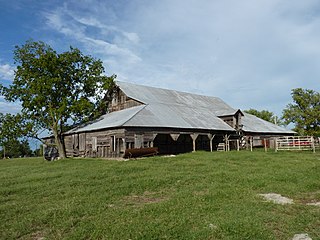
This is a list of properties and historic districts in Oklahoma that are designated on the National Register of Historic Places. Listings are distributed across all of Oklahoma's 77 counties.
The following buildings were added to the National Register of Historic Places as part of the Lee County Multiple Property Submission.

The Atlas Life Building is a historic twelve-story building in downtown Tulsa, Oklahoma. Designed by the firm Rush, Endacott and Rush, the building was completed in 1922. It is located at 415 S. Boston Avenue, sandwiched between the Philtower and Mid-Continent Tower. On May 19, 2009, it was added to the U.S. National Register of Historic Places. Originally an office building, it was converted to hotel use in 2010.

The Manhattan Building, also known as the Phoenix Building or the Phoenix-Manhattan Building, is a historic skyscraper in Muskogee, Oklahoma. The building has eight stories, containing 50,957 square feet (4,734.1 m2) of floor space, and was initially intended as the home of the Manhattan Construction Company, reportedly Oklahoma's first incorporated business. It was built in 1911 with a reinforced concrete frame and gray brick cladding. These walls were lined with windows to provide light and ventilation, the latter were essential to cope with torrid Oklahoma summers in an era when hardly any large buildings had air conditioning. It was built in Sullivanesque architectural style, with two-story columns flanking the entrance and a second floor cornice with dentils. The entry opened into a two-story lobby whose walls were covered with tile. A rooftop penthouse was added in 1957. The Manhattan Building was added to the National Register of Historic Places for architectural significance in 1983.

This is a list of the National Register of Historic Places listings in Chesterfield County, Virginia.
This is a list of the 58 Multiple Property Submissions on the National Register of Historic Places in Florida. They contain approximately 400 individual listings of the more than 1,500 on the National Register for the state.

This is a list of the National Register of Historic Places listings in Tulsa County, Oklahoma.
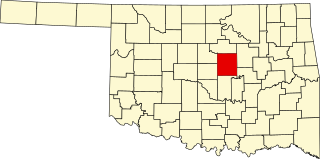
This is a list of the National Register of Historic Places listings in Lincoln County, Oklahoma.
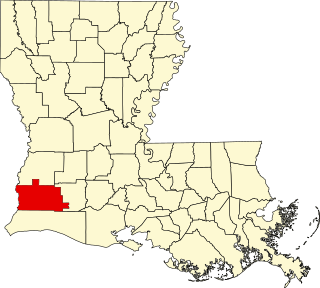
This is a list of the National Register of Historic Places listings in Calcasieu Parish, Louisiana.
This is a list of the National Register of Historic Places listings in Cuyahoga Valley National Park.

The 11th Street Bridge was completed in December 1915 to carry vehicles across the Arkansas River at Tulsa, Oklahoma. Used from 1916 to 1972, it was also a part of U.S. Route 66. Functionally, it has been replaced by the I-244 bridges across the Arkansas. As of 2009, the bridge was in poor structural condition and unsafe even for pedestrians. In 2008, the gates were locked to exclude all visitors.
The National Register Information System (NRIS) is a database of properties that have been listed on the United States National Register of Historic Places. The database includes more than 84,000 entries of historic sites that are currently listed on the National Register, that were previously listed and later removed, or that are pending listing. The database includes approximately 45 pieces of data for each listed property. Accuracy of the NRIS database may be imperfect. For example, a 2004 paper addressed accuracy of spatial location data for part of the NRIS content.

The Casa Grande Hotel is a historic hotel located at the intersection of 3rd Street and historic U.S. Route 66 in downtown Elk City, Oklahoma. The hotel opened in 1928, shortly after Route 66 was designated, to lodge the growing number of travelers on the highway. Architects Hawk and Parr designed the four-story building in the Spanish Eclectic style; their design features arched windows and doors and stone ornamentation along the arches. Spanish-influenced styles such as the Spanish Eclectic were common on the southwestern portion of Route 66 due to the region's Spanish history. The luxury hotel faded in popularity after the 1920s, and as a result, the Casa Grande is the only high-rise hotel on Route 66 between Oklahoma City and Amarillo, Texas.
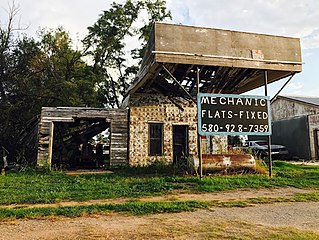
The Magnolia Service Station is a historic service station located on Old U.S. Route 66 in Texola, Oklahoma. The station, an affiliate of the Magnolia Petroleum Company, opened circa 1930. The station was one of the westernmost in Oklahoma and became one of the first stops for eastbound travelers to buy gas and auto services in the state. The main building of the service station is representative of the "house" style of filling station; such stations resembled small houses in order to fit into residential areas.
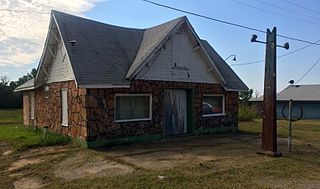
The Threatt Filling Station, at the southwestern corner of the former U.S. Route 66 and Pottawatomi Rd. about 3 miles (4.8 km) east of Luther, Oklahoma, is a filling station built around 1915. The station closed in the 1970s. It was listed on the National Register of Historic Places in 1995.

The Cities Service Station #8, at 1648 SW Boulevard in Tulsa, Oklahoma, was built in 1940 by Cities Service in the Modern Movement style. It was listed on the National Register of Historic Places in 2011.

The Sinclair Service Station in Tulsa, Oklahoma, at 3501 E. 11th St., was built in 1929. It was listed on the National Register of Historic Places in 1996.

The 66 Motel in Tulsa, Oklahoma was built on the original, two-lane U.S. Route 66 around 1933 and was listed on the National Register of Historic Places in 1996. The listing included two buildings: the main or office building and a separate strip of motel rooms. The buildings are described as having "a vernacular interpretation of the Moderne style of architecture, sharing similar characteristics such as horizontal emphasis, flat roofs, asymmetrical design, and glass block windows."
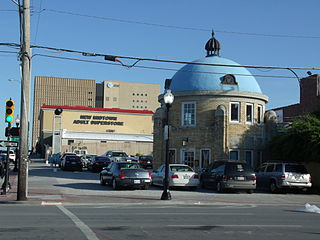
The Blue Dome Historic District in Tulsa, Oklahoma is a historic district which was listed on the National Register of Historic Places in 2016. It is a seventeen block area of commercial, industrial, and mixed-use buildings, as well as open spaces, just east of the downtown business area of Tulsa. The listing included 73 resources, including 45 contributing buildings and three contributing structures, on 59 acres (24 ha). The district thrived economically for about seventy years.
















